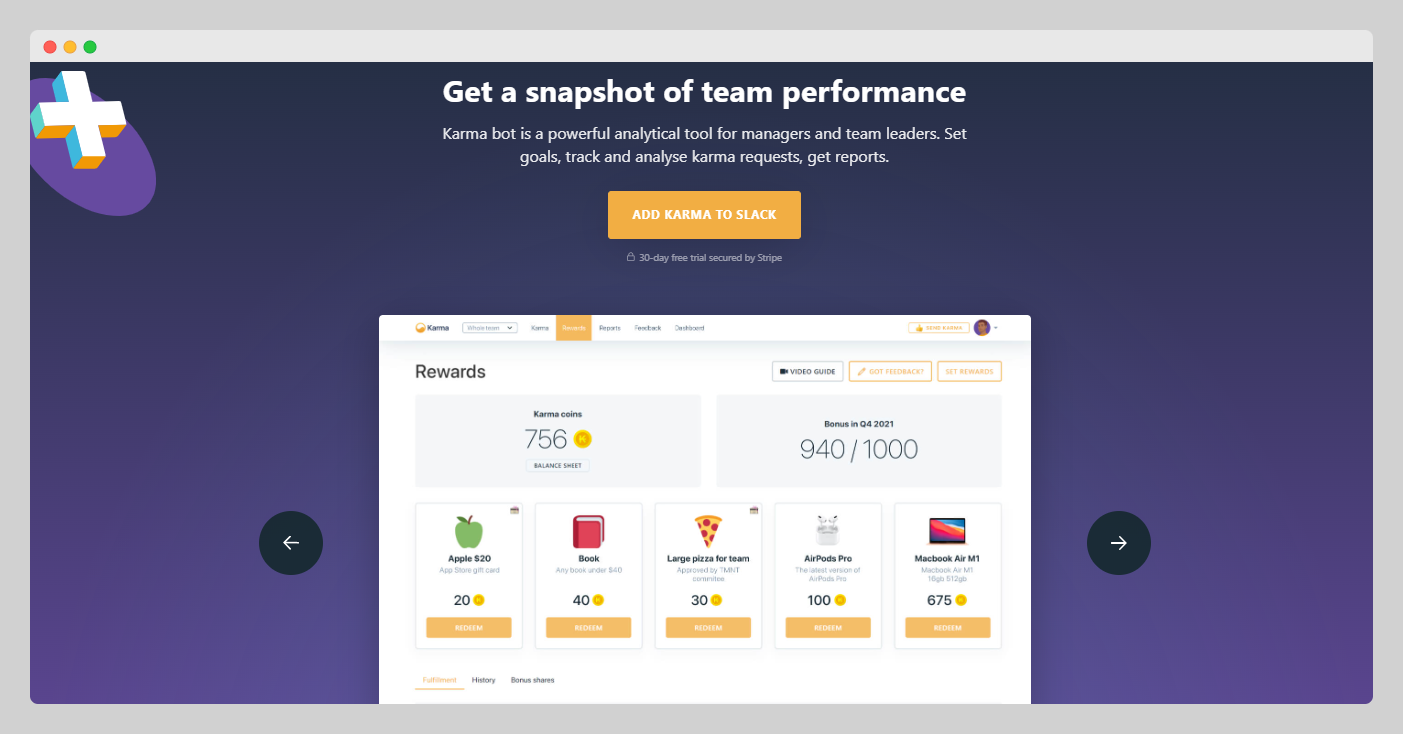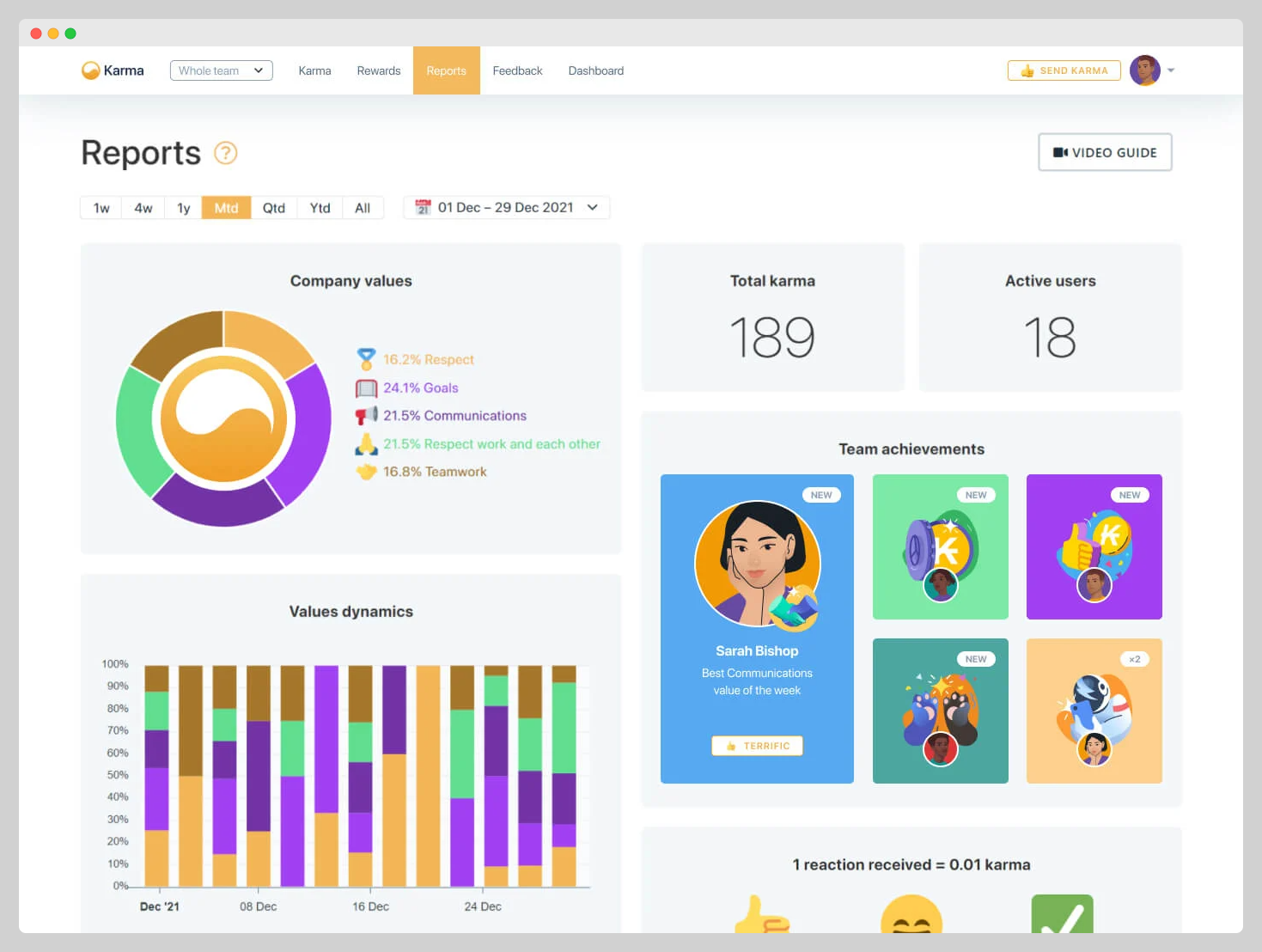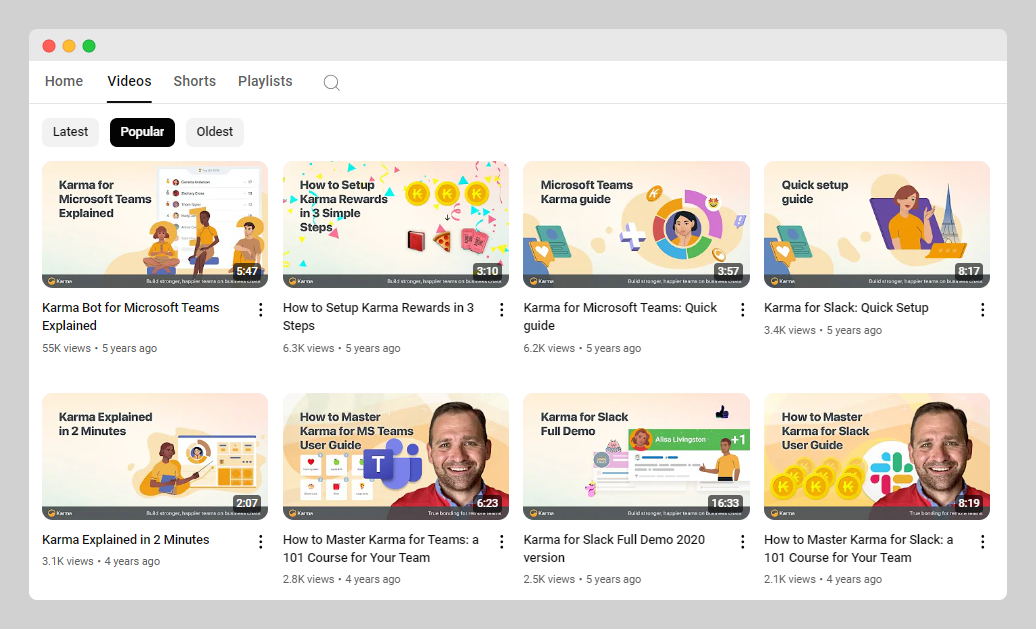How 2 Founders Bootstrapped Karma Bot to $420K ARR in 2 Years
Who is David Kravitz?
David Kravitz is one of the founders of Karma, a chat-based tool to enhance team collaboration; he co-runs a web development agency in Auckland, New Zealand, and built Karma initially to address internal team inefficiencies.
What problem does Karma solve?
Karma addresses the problem of low team engagement and inefficient performance tracking in large or remote teams by providing a seamless system for peer recognition, performance reviews, and real-time activity monitoring within Slack. This alleviates the pain point of disconnected and unmotivated teams, making it a valuable tool for improving team productivity and morale.

How did David come up with the idea for Karma?
David and his co-founder Stas recognized the issue of team inefficiency firsthand while running their web development agency. They noticed that even with a great team, employees often worked in silos, leading to delayed projects and increased costs. This observation motivated them to build Karmabot as an internal tool to better align their team on Slack and boost collective performance through a rewards system.
Before fully committing to the idea, they experimented with existing tools but found them lacking, particularly in linking productivity directly to employee bonuses. This gap led them to develop a Minimum Viable Product (MVP) integrating instant recognition and leaderboard features to track team performance more effectively. They refined their product based on initial feedback and internal testing, ensuring it addressed both their employee engagement needs and provided valuable insights for performance management.
During the ideation phase, they encountered challenges such as making the system user-friendly and ensuring it provided actionable insights. By iterating through multiple versions and incorporating advanced technologies like Natural Language Understanding, they overcame these hurdles, developing a robust solution that not only suited their needs but also resonated with larger organizations facing similar issues. The key lesson they learned was iterating based on real-world use and feedback to create a product that truly solves a pressing problem.
How did David build the initial version of Karma?
Karma's product journey began with a simple in-house tool built at Sliday to improve team dynamics. The initial MVP, Karma 1.0, was a basic chatbot for Slack that allowed team members to award "++" or "--" for positive or negative actions, developed in a couple of months using Python for backend processing and JavaScript for front-end integration with Slack's API. Testing involved using CSV files and leaderboards to measure effectiveness and bonus distribution, revealing areas needing more automation and streamlined functionality.
Moving to Karma 2.0, the development incorporated Natural Language Understanding (NLU) and Machine Learning to better analyze and predict user behavior, continuing to iterate based on internal usage and feedback.
The effort to build Karma 3.0 included adding comprehensive features like time-tracking, performance reviews, and a full-screen dashboard for managers, significantly complicating the development process and requiring considerable effort to ensure user adoption amidst rising complexity.

How did David launch Karma and get initial traction?
Kickstarter
The company launched a Kickstarter campaign to fund the development of their product. It did $300,000 in sales in the first 3 months. In their Kickstarter campaign, they offered a 10% discount to early backers.
Why it worked: Kickstarter is a great platform for getting initial customers, they were able to get a lot of attention and get 1,000+ people to buy and test the product.
Product Hunt
The company launched a product on Product Hunt. They got 100 upvotes, and 1% of the people who upvoted bought the product. They did something really smart thought, they sent a follow up email to everyone who upvoted their product. This resulted in 10 more sales.
Why it worked: Product Hunt allowed them to get attention for free, this turned into articles written by other people, which helped get the word out.
Direct Sales
The company launched a direct sales campaign to get their first customers. They spent $1,000 on Facebook ads to get the word out, and then collected emails from people who visited their website. Their conversion rate was 10%, and they got 100 emails.
Why it worked: For a product like this, direct sales is a great way to get initial customers. Even though it's not the most scalable solution, it was a great way to get the word out and get initial customers.
What was the growth strategy for Karma and how did they scale?
YouTube
Karma started by creating educational videos about their product and its benefits on YouTube. They shared real-life use cases and provided detailed insights on how to make the most out of their chatbot. One of their videos, "Why We Made Karma Bot: Better Team Praise System," highlights their journey and the practical applications of the tool, encouraging more viewers to try it.

Why it worked: YouTube is a powerful platform for demonstrating how a product works in real-world situations. By sharing engaging content with clear examples, they built trust and interest among potential users. The visual and explanatory nature of their videos helped to convert viewers into users by showcasing the tool's real value.
SEO
Karma invested in SEO by creating valuable content that targeted specific keywords related to team management and productivity. They wrote blog posts that tackled common issues in team collaboration and culture, which helped them rank higher on search engines. Their post on 'Peer Recognition with Karma Bot' is a prime example where they captured attention by addressing a widespread need.
Why it worked: By focusing on keywords such as 'team performance management' and 'team engagement tools,' Karma attracted traffic from people actively searching for solutions to improve their teams' dynamics. High-quality, relevant content drove organic traffic and helped convert visitors into customers.

Email Marketing/Newsletter
Karma implemented an email marketing strategy that included onboarding email automation, product demos, user stories, videos, gifs, and how-to guides. This approach was especially useful for user retention and engagement. They also sent out regular updates and newsletters to keep their users informed about new features and improvements.
Why it worked: Regular emails kept the users engaged and informed, which is crucial for a subscription-based service. Automated onboarding emails ensured that new users were properly introduced to the product, increasing the chances of long-term retention. Additionally, the varied content in emails catered to different user preferences, making the communication more effective.
Interactive Tours
An innovative step Karma took was creating an interactive tour to showcase the simplicity of their bot's usage. This interactive tour allowed potential users to experience the functionality of the bot firsthand, directly on their website, which simplified the learning curve significantly.
Why it worked: Interactive tours engage users actively, allowing them to explore the tool's features in an intuitive way. This hands-on approach leads to a better understanding and appreciation of the product, resulting in higher conversion rates. The interactive tour became a quick and straightforward way for the sales team to demo the product, increasing its effectiveness.
What's the pricing strategy for Karma?
Karma offers three pricing tiers: Free for basic features, Pro at $2 per user/month, and Business at $5 per user/month for advanced analytics and integrations.
What were the biggest lessons learned from building Karma?
- Focus on Team Dynamics: Initially, Karmabot was built to address internal team issues like inefficiency and misalignment. It emphasizes that a cohesive and well-functioning team is crucial for business success.
- Adapt and Iterate: Karmabot evolved through multiple versions, integrating new features like NLU and Machine Learning based on feedback and needs. This shows the importance of continuously improving your product.
- User Education is Key: One challenge faced was educating users about the complexity of the platform. They implemented an interactive tour to overcome this, highlighting the importance of effective onboarding and user education.
- Embrace Flexibility: They tried various strategies for engagement and onboarding, including automating emails and creating demos. This underscores the need for flexibility in your approach and the willingness to experiment.
- Leverage Customer Feedback: The product iterations were driven by real-world feedback, showing that listening to customers can guide meaningful improvements and innovation.
Karma Acquisition: How much did Karma sell for and what was the acquisition price?
Karma was acquired by Atlassian in December 2019 for an undisclosed amount.
Discover Similar Business Ideas Like Karma
Rezi, an AI-powered resume builder, skyrocketed from a simple $9.69 Microsoft Word template to serving over 2.6 million job seekers and achieving a monthly recurring revenue of $215K, showing how clever branding, strategic early decisions, and creative growth hacking can turn a side project into a profitable SaaS business.
A passionate computer-coder entrepreneur shares the story behind his successful PDFShift business which after a year and a half generates $3.2k of monthly revenues with the focus now on growth.
More about Karma:
Who is the owner of Karma?
David Kravitz is the founder of Karma.
When did David Kravitz start Karma?
2017
What is David Kravitz's net worth?
David Kravitz's business makes an average of $35K/month.
How much money has David Kravitz made from Karma?
David Kravitz started the business in 2017, and currently makes an average of $420K/year.

Download the report and join our email newsletter packed with business ideas and money-making opportunities, backed by real-life case studies.

Download the report and join our email newsletter packed with business ideas and money-making opportunities, backed by real-life case studies.

Download the report and join our email newsletter packed with business ideas and money-making opportunities, backed by real-life case studies.

Download the report and join our email newsletter packed with business ideas and money-making opportunities, backed by real-life case studies.

Download the report and join our email newsletter packed with business ideas and money-making opportunities, backed by real-life case studies.

Download the report and join our email newsletter packed with business ideas and money-making opportunities, backed by real-life case studies.

Download the report and join our email newsletter packed with business ideas and money-making opportunities, backed by real-life case studies.

Download the report and join our email newsletter packed with business ideas and money-making opportunities, backed by real-life case studies.





